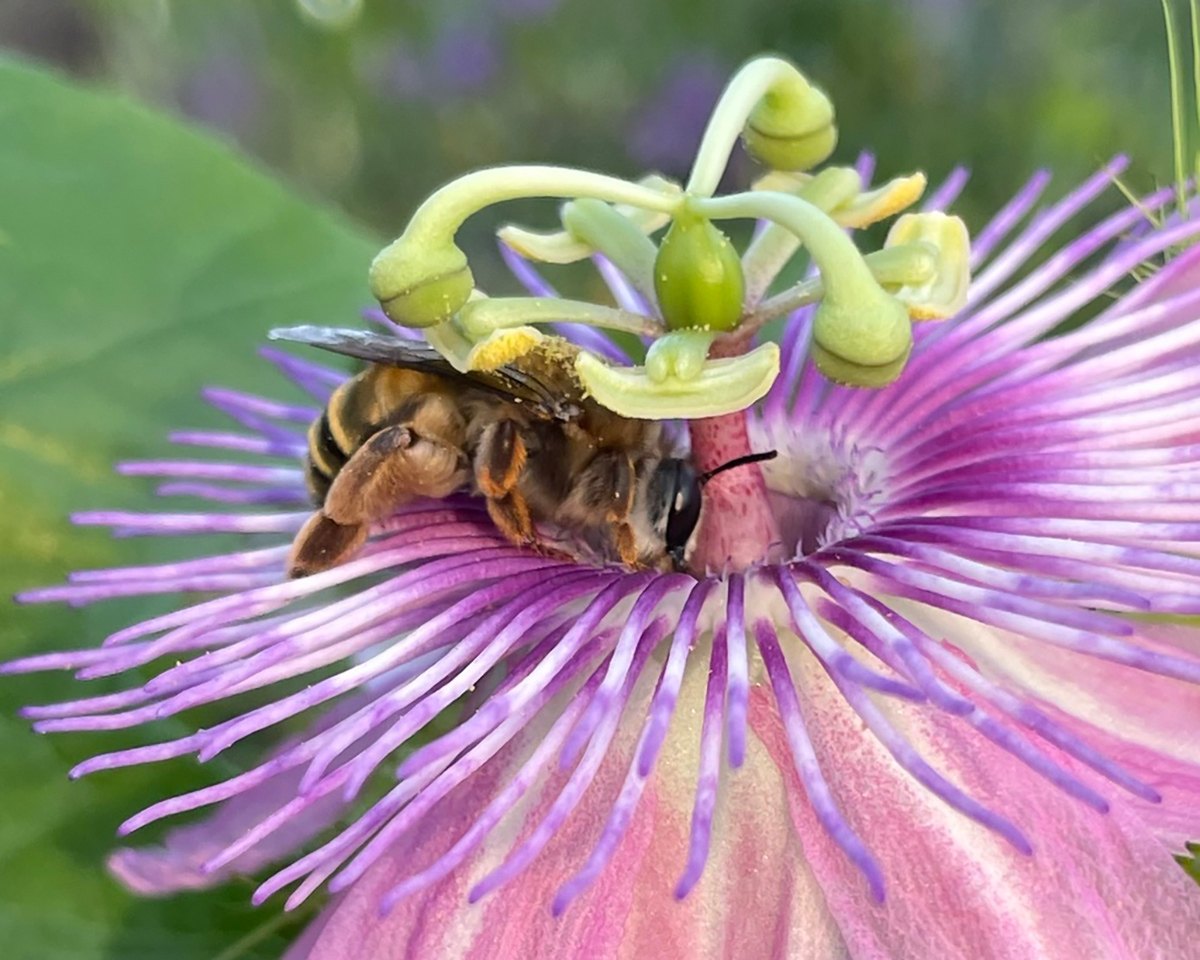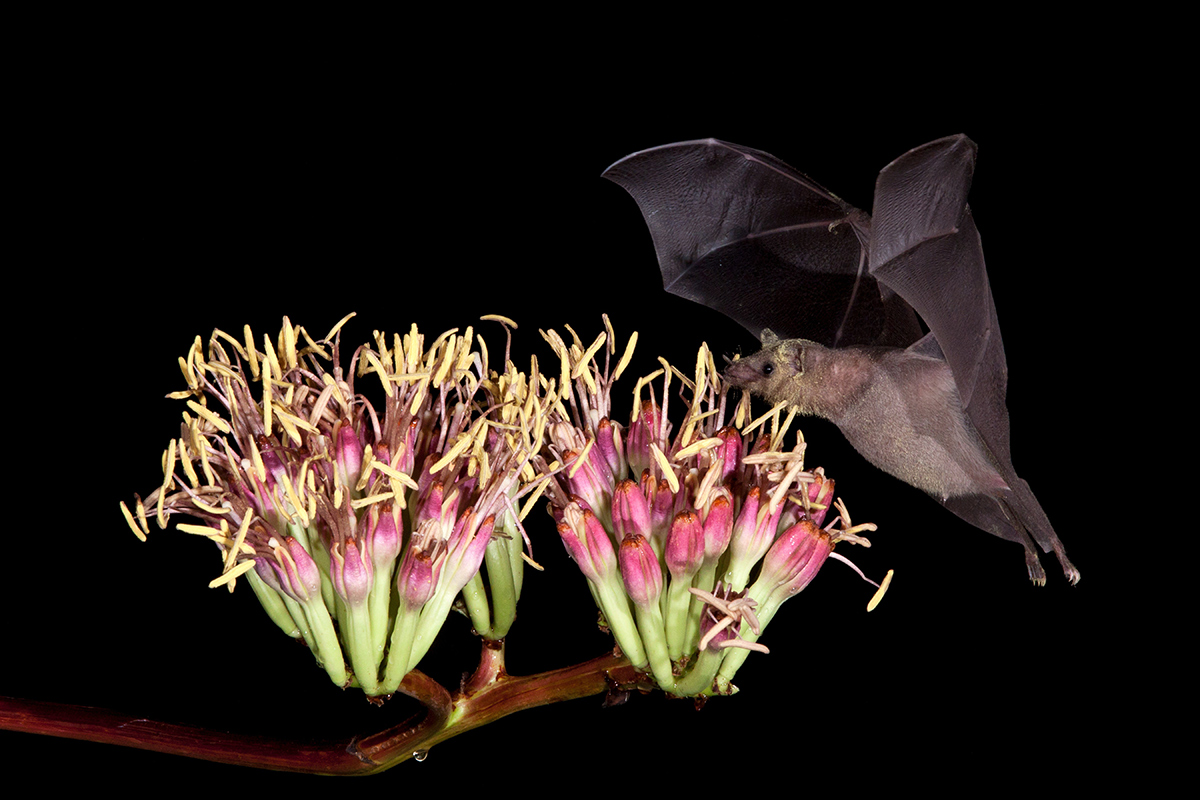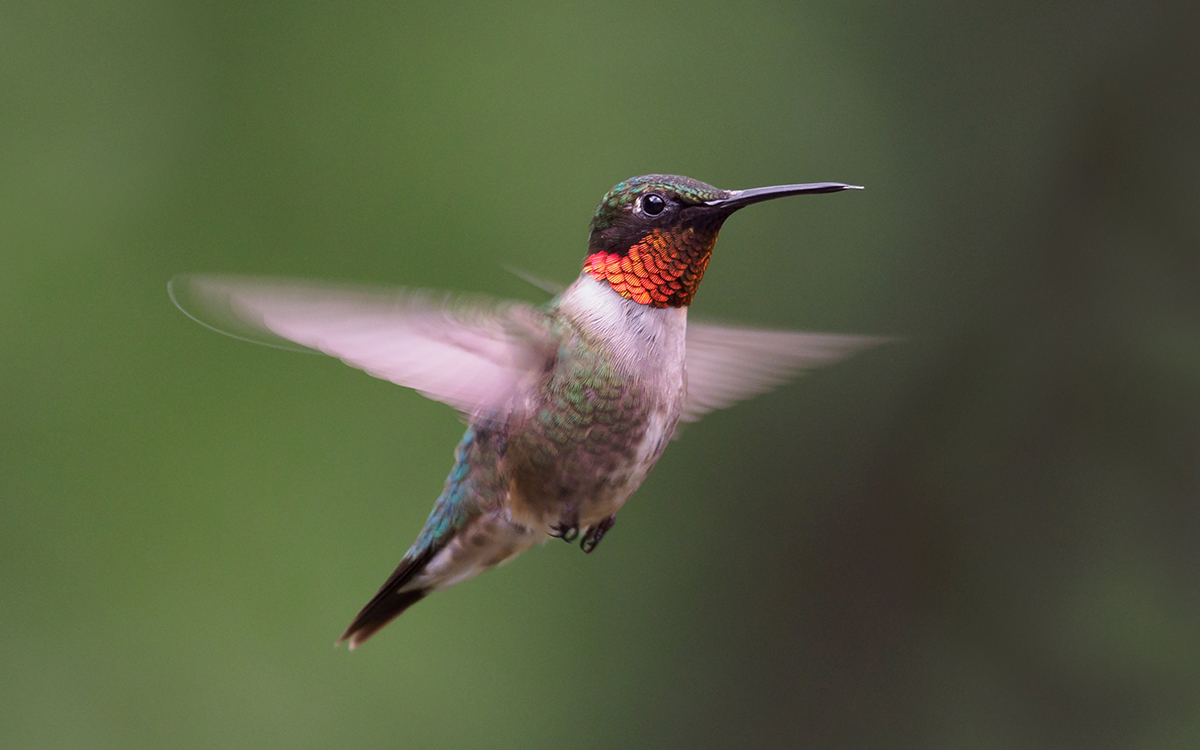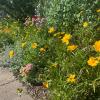Pollination is the transfer of pollen grains from one flower to another that enables plants to develop seeds and reproduce. While some plants can be pollinated by wind, water, or even themselves, it is much more common for pollination to require the (often unintentional) labor of animals. These “pollinators” perform a vital service that much of life on earth quite literally could not live without. So, every June we celebrate National Pollinator Week to give extra thanks to pollinating animals like bees and butterflies. You might be surprised to learn that other animals are pollinators too!
Bees
Bees are four-winged insects with hairy bodies and five eyes. They come in so many shapes, sizes, and colors. There are approximately 20,000 bee species worldwide, and less than 5% of these make honey. The majority of bees are solitary and nest in the ground. Bees visit flowers because they eat flower pollen and nectar throughout their life cycle. Pollen readily clings to bees’ hairy bodies, making bees very efficient pollinators.
Bee Spotlight: Ptiloglossa Mexicana

Butterflies
Once butterflies metamorphosize from caterpillars into scaly-winged adult butterflies with clubbed antennae, they develop a taste for nectar. While using their proboscises as nectar straws, pollen can stick to butterfly bodies and transfer to other flowers they land on. Butterflies taste with their feet, so landing on leaves can help females determine if a plant is the right kind and quality for egg laying.
Butterfly Spotlight: Pallid Dotted-Blue

Moths
Moths are similar to butterflies in biology and appearance, but they tend to be more plump and fuzzy than butterflies, with tapered or feathery antennae. Like butterflies, moths transfer pollen incidentally while drinking nectar. As a group, moths tend to be nocturnal, making many of them night shift pollinators. Some flowers only open at night, meaning they rely on nighttime pollination. Nocturnal flowers tend to be white or pale to reflect moonlight and can become more fragrant in the darkness to lure moths and other nocturnal pollinators.
Moth Spotlight: Yucca moth

Beetles
Beetles generally have a hard exoskeleton and a protective set of wing covers for their thin wings. One in four living species on earth is a beetle. As the biggest and most diverse group of organisms out there, beetles vary vastly in appearance, behavior, and ecological role. Not all beetles are pollinators. The beetles that do visit flowers are in search of tasty pollen. Fossil records suggest that beetles were among the first insect pollinators of prehistoric flowering plants in the late Jurassic era, around 150 million years ago. Because of this long history, many of the plants that are beetle-pollinated today have a similarly long lineage. Beetle-pollinated plants tend to have heavily scented, large, cup-like flowers that open during the day with tough petals and leaves. Flower colors range from white and cream to pale green or even burgundy. Flowers they favor often smell spicy, sweet, musky, or fermented, like overripe fruit. Beetles will also eat through leaves and petals, leaving some mess and destruction behind, so beetle-pollinated plants have evolved to have thicker flowers and leaves in order to survive feeding damage. Pollen sometimes sticks to beetle bodies as they move from flower to flower, facilitating pollination.
Beetle Spotlight: Bee-Like Flower Scarab

Flies
Flies are insects with one pair of wings for flying and a tiny pair of wing-ish halteres that help them stay agile and stable in flight. Flies are another diverse group of insects and not all of them are pollinators. But some do transfer pollen while feeding on pollen and nectar. Flies are famously indiscriminate with tastes and smells. Some flowers are uniquely pollinated by flies because of their putrid or lackluster odors. Flies also tend to pollinate flowers with complex structures and dull colors that other pollinators pass on.
Fly Spotlight: Cobalt Hover Fly

Wasps
Wasps are closely related to bees, tending to be more slender, smooth, and predatory. They hunt prey to feed their larvae, but adults eat flower nectar, fruits, and even sugary excretions produced by their own larvae. Nectar is the reason they visit flowers, sometimes transferring pollen in the process. While their smooth bodies aren’t very efficient at trapping pollen, their relatively minor pollination services shouldn’t be overlooked.
Wasp Spotlight: Pollen Wasps

Bats
Nectar-feeding bats are both flying nocturnal mammals and nighttime pollinators. According to Bat Conservation International, they are attracted to flowers with musty, rotten odors. Bat fur makes for great pollen transfer. Bats sometimes use echolocation to find flowers, which works especially well on bell shaped blossoms and dangling flowers that better reflect the echo of the bat’s ultrasonic call. Bats that mostly eat nectar will sometimes eat insects to complement their diets.
Bat Spotlight: Lesser Long-Nosed Bat

Birds
As the National Audubon Society knows well, some birds transfer pollen while drinking nectar from flowers. These birds often have long, slender bills perfect for accessing the nectar of tubular flowers. Flowers that are pollinated by birds tend to be bright red, yellow, or orange with lots of nectar. Many birds that drink nectar also eat insects to supplement their diet.
Bird Spotlight: Ruby-Throated Hummingbird




